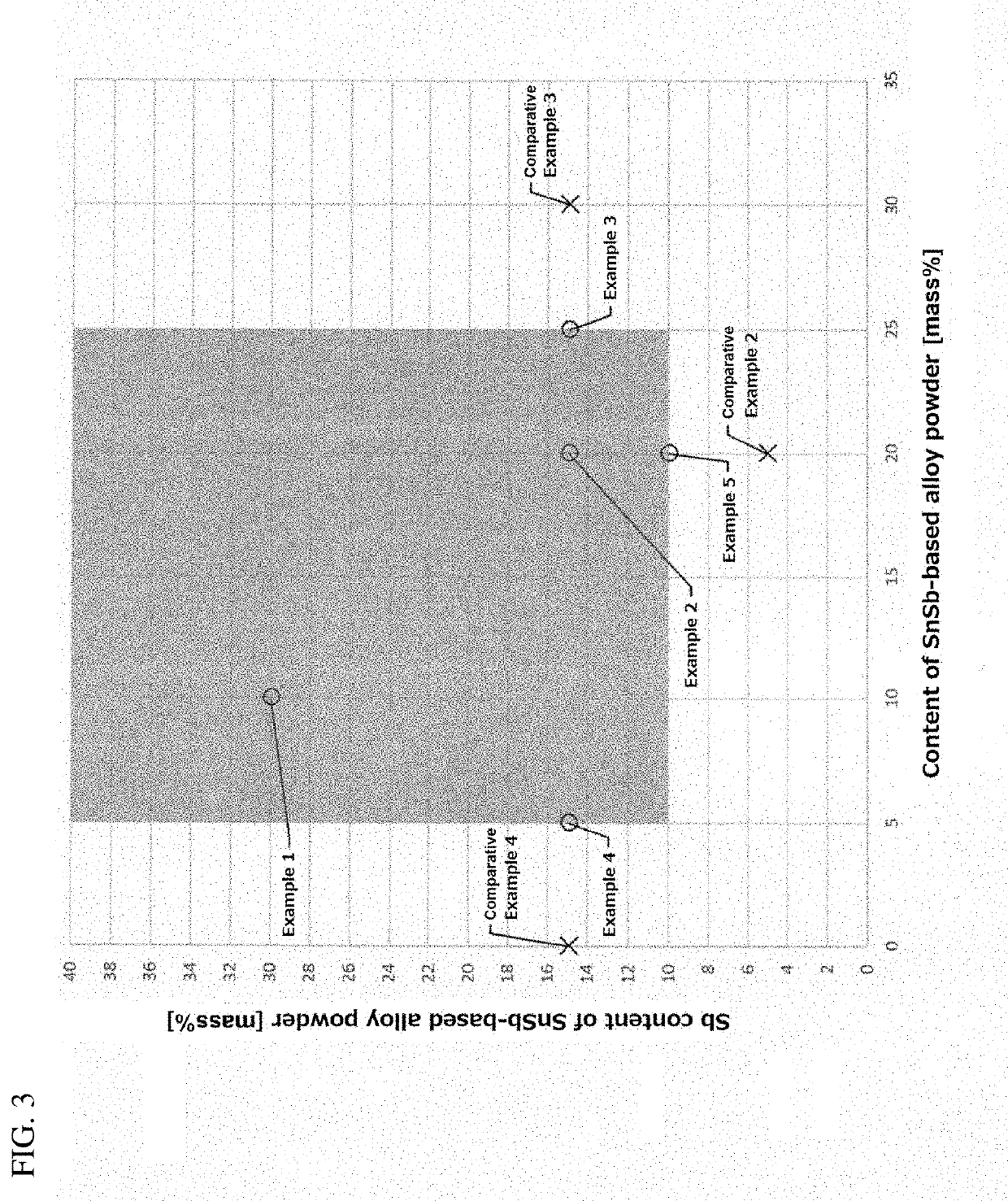Solder paste
a technology of solvent paste and slag, which is applied in the direction of solventing apparatus, welding/cutting media/materials, manufacturing tools, etc., can solve the problems of poor wettability, difficult to discharge voids to the outside, and easy oxidation of second alloy powder, etc., to achieve the effect of easy oxidation and poor wettability
- Summary
- Abstract
- Description
- Claims
- Application Information
AI Technical Summary
Benefits of technology
Problems solved by technology
Method used
Image
Examples
examples
[0055]—Preparation of Paste
[0056]For two types or one type of alloy powder comprising alloy compositions as shown in Tables 1 to 3, an alloy powder was prepared which has a spherical diameter of 21 μm and corresponds to 5 according to the powder size classification (Table 2) of JIS Z 3284-1: 2014. The content of each powder as shown in Tables 1 to 3 represents a mass ratio (mass %) with respect to a total mass of the powders. It was then mixed with a known paste-like rosin-based flux to prepare the solder pastes of Examples 1-45 and Comparative Examples 1-4. These solder pastes had 90% of the alloy powder relative to the total mass of the solder pastes.
[0057]—Void Area Ratio, Maximum Void Diameter
[0058]These pastes were printed with a thickness of 0.15 mmt on a Cu—OSP glass epoxy substrate by using a metal mask. Then, by using a mounter, QFN of 8 mm×8 mm×2 mm was placed on the paste. Thereafter, it was put into a reflow furnace, and reflow heating was performed under the condition o...
PUM
| Property | Measurement | Unit |
|---|---|---|
| diameter | aaaaa | aaaaa |
| liquidus temperature | aaaaa | aaaaa |
| temperature | aaaaa | aaaaa |
Abstract
Description
Claims
Application Information
 Login to View More
Login to View More - R&D
- Intellectual Property
- Life Sciences
- Materials
- Tech Scout
- Unparalleled Data Quality
- Higher Quality Content
- 60% Fewer Hallucinations
Browse by: Latest US Patents, China's latest patents, Technical Efficacy Thesaurus, Application Domain, Technology Topic, Popular Technical Reports.
© 2025 PatSnap. All rights reserved.Legal|Privacy policy|Modern Slavery Act Transparency Statement|Sitemap|About US| Contact US: help@patsnap.com



